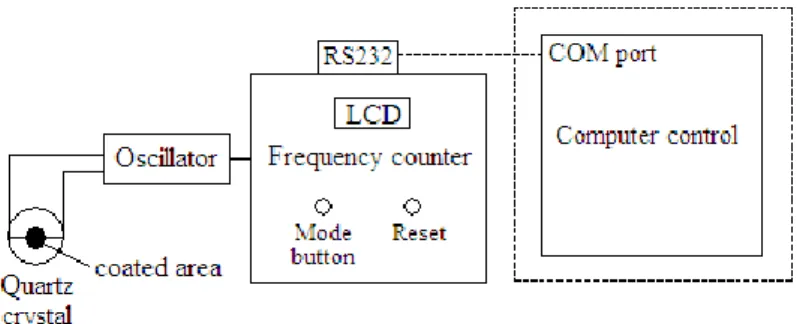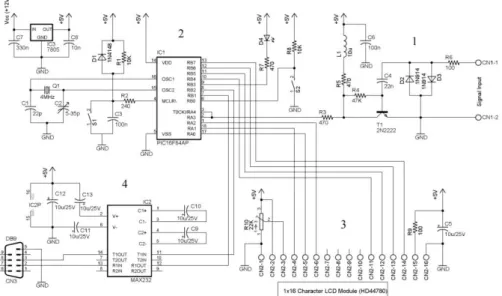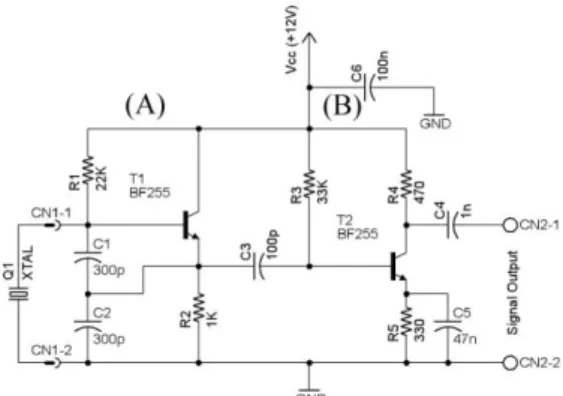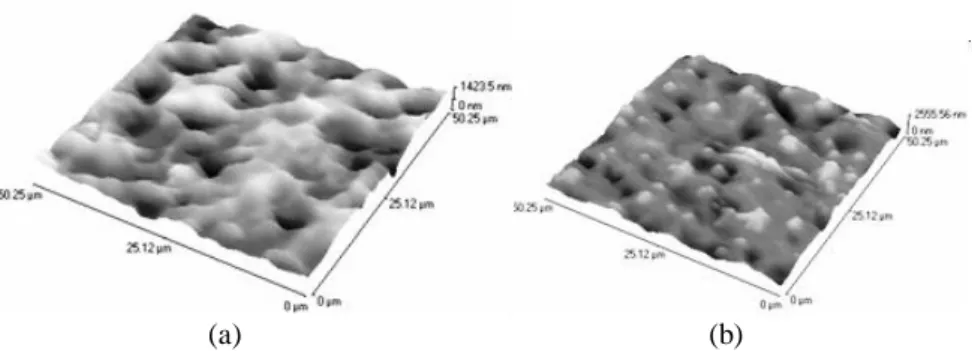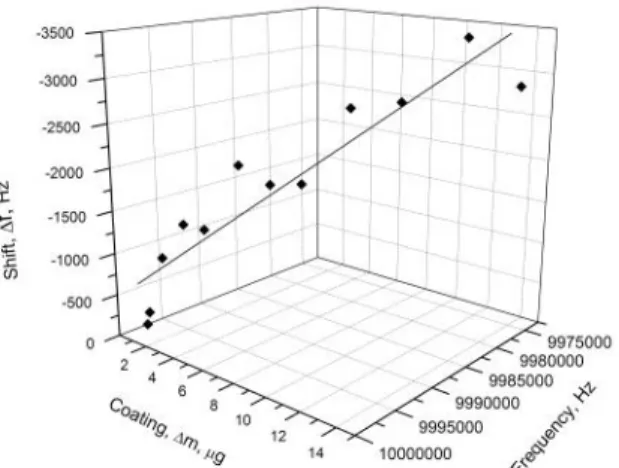C O M M U N I C A T I O N S
DE LA FACULTE DES SCIENCES FACULTY OF SCIENCES
DE L’UNIVERSITE D’ANKARA UNIVERSITY OF ANKARA
Series B: Chemistry and Chemical Engineering
VOLUME: 57 Number:1- 2 YEAR: 2011
Faculty of Sciences, Ankara University 06100 Tandoğan, Ankara – TURKEY
C O M M U N I C A T I O N S
DE LA FACULTE DES SCIENCES FACULTY OF SCIENCES
DE L’UNIVERSITE D’ANKARA UNIVERSITY OF ANKARA
Series B: Chemistry, Chemical Engineering
Owner MUAMMER CANEL Editor-in-Chief CAFER COŞKUN Editor ATİLLA ÖKTEMER Managing Editor ALİ SİNAĞ ADVISORY BOARD
E.ALPAY Ege Univ. M.SAÇAK Ankara Univ. Z.KILIÇ Ankara Univ. R.TÜRKER Gazi Univ.
A.KENAR Ankara Univ. C.ÜNALEROĞLU Hacettepe Univ. M.OBALI Ankara Univ. A.YAġAR Gazi Univ.
ġ.PEKYARDIMCI Ankara Univ. B.PEYNĠRCĠOĞLU METU
This Journal is published two issues in a year by the Faculty of Sciences, University of Ankara. Articles and any other material published in this journal represent the opinions of the author(s) and should not be construed to reflect the opinions of the Editor(s) and the Publisher(s).
Correspondence Address:
COMMUNICATIONS DERGĠ BAġEDĠTÖRLÜĞÜ Ankara Üniversitesi Fen Fakültesi, 06100 Tandoğan, ANKARA – TURKEY
Tel: (90) 312-212 67 20 Fax: (90) 312-223 23 95 e-mail: commun@science.ankara.edu.tr
Print:
Ankara Üniversitesi Basımevi ĠncitaĢ Sokak No:10 06510 BeĢevler ANKARA – TURKEY
Tel: (90) 312-213 65 65 Basım Tarihi:
C O M M U N I C A T I O N S
DE LA FACULTE DES SCIENCES FACULTY OF SCIENCES
DE L’UNIVERSITE D’ANKARA UNIVERSITY OF ANKARA
Series B: Chemistry and Chemical Engineering
VOLUME: 57 Number:1- 2 YEAR: 2011
Faculty of Sciences, Ankara University 06100 Tandoğan, Ankara – TURKEY
C O M M U N I C A T I O N S
DE LA FACULTE DES SCIENCES FACULTY OF SCIENCES
DE L’UNIVERSITE D’ANKARA UNIVERSITY OF ANKARA
Volume : 57 Number : 1- 2 Year : 2011
Series : B
F. ARI AND H. NAZIR; Microcontroller based low-cost device for quartz crystal microbalance………...………...1
Commun. Fac. Sci. Univ. Ank. Series B V.57 (1-2). pp. 1- 8 (2011)
1
MICROCONTROLLER BASED LOW-COST DEVICE FOR QUARTZ CRYSTAL MICROBALANCE
FİKRET ARI1 AND HASAN NAZIR2
1
Ankara University, Faculty of Engineering, Department of Electronics Engineering, 06100 Besevler, Ankara-TURKEY
2
Ankara University, Faculty of Science, Department of Chemistry, 06100 Besevler, Ankara-TURKEY
(Received: October 12, 2011; Accepted: December 08, 2011)
ABSTRACT
Development of simple and low cost chemical/biological sensors forms an important research area for interdisciplinary sciences. Piezoelectricity based Quartz Crystal Microbalance (QCM) systems may be readily utilized in testing newly developed sensor materials. In this work, construction of a simple, hand held, computerized QCM apparatus is proposed. Most of the sensor applications usually encountered in freshman laboratories can be performed with this system and the proposed electronic circuit can be assembled by the students themselves.
KEYWORDS: Instrumental Methods, Quantitative Analysis, Laboratory
Equipment/Apparatus, Quartz Crystal Microbalance
INTRODUCTION
Among the research topics of interdisciplinary sciences, the studies aiming towards developing cheap and simple chemical and biological sensors have become very popular. Of these new sensors, applicable ones are more advantageous and beneficial than traditionally more complex sensors. Quartz Crystal Microbalance (QCM) is a low cost, real time, piezoelectricity based gravimetric system and yields highly sensitive (theoretically in the order of picograms) measurements 1,2. QCM was first introduced by Sauerbrey as a mass sensor in gas phase and in vacuum 3. Sauerbrey was also the first in providing the mathematical treatment of mass sensitivity of the quartz oscillation.
By analytically solving the one-dimensional equation of motion as given below, Sauerbrey showed that an ideal foreign mass layer results in a frequency decrease,
FİKRET ARI AND HASAN NAZIR 2
f, that is proportional to the deposited mass, m, if the resonator is operated in air
or vacuum 3.
m
A
f
f
q q
2 02
Here is the frequency change (Hz), f0 is the fundamental oscillating frequency of the
quartz crystal (Hz), m is the mass of deposited film or mass change of the adsorbed
analyte, (g) and A is the area of electrode surface (cm2). Shear modulus, µq,
and density of the quartz, q, are crystal parameters and can be taken as
2.947x1011 gcm-1s-2 and 2.648 gcm-3, respectively.
The main component of such a device is a thin quartz disc which is used as a transducer in the system. The quartz disk is sandwiched between two evaporated metal electrodes and commonly referred to as thickness shear mode resonator (TSM resonator) or bulk acoustic wave sensor. Depending on the cut angle with respect to the crystal lattice, a large variety of resonator types may be obtained from a quartz crystal. The cut angle determines the mode of induced mechanical vibration. AT–cut quartz crystals are most suitable for QCM sensors because they show unusually large frequency stability (f/f 10–8) and near–zero temperature coefficient when temperature is in the range of 0–50 °C. An external oscillator circuit is connected to the electrodes to drive the quartz crystal at its resonant frequency and a frequency counter is connected to the oscillator circuit to measure the frequency of the crystal. QCM became accepted as a new powerful technique to monitor adsorption processes at solid/liquid interfaces in chemical and biological research rendering the method an attractive low-cost alternative for physical, chemical and biochemical 4-7 applications.
The purpose of this work is to construct a low cost (about $ 20), hand-held, computerized QCM apparatus to test the chemisorption process in the nanoscale level and perform some sensor applications usually encountered in freshman chemistry laboratories. The QCM system developed for this purpose is composed of a quartz crystal (HC 49/U) which can be purchased for less than 50 cents, a colpitts oscillator and a frequency counter which can be controlled either by a microcontroller or a personal computer. Readily obtainable standard electronic circuitry elements are used in the design of the system. A simple electronic circuit, which can easily be assembled by the students themselves, is employed to control the system. The assembly of the circuit is valuable to introduce to the students some fundamental topics in electronics that are useful in modern chemistry. C60 working range determination was selected to demonstrate the stability of the system due to its interesting properties 8 and potential use in QCM systems as an alternative coating material in a rather wide range 9-10. Fullerene (C60) was used as the coating material
MICROCONTROLLER BASED LOW-COST DEVICE FOR QCM 3
and polyvinyl chloride was used as the support material for this purpose. Surface topography of the coated material was examined by atomic force microscopy.
CONSTRUCTION OF THE QCM Apparatus
The reaction carriers used were 10 MHz quartz crystals with silver electrodes, purchased from RS Company (Part Number: 471-9809). They were in the standard component form of HC 49/U with a quartz wafer diameter of 8.2 mm and silver electrode diameter of 4.5 mm. The quartz crystal oscillator circuit was assembled using commercially available electronic parts: Transistors - BF255 (two pieces), resistors – 330 , 470 , 1 K, 22 K, 33 K, capacitors – 100 pF, 300 pF (two pieces), 1 nF, 47 nF, 100 nF. The microcontroller based frequency meter circuit was also assembled using easily available commercial electronic parts: PIC16F84AP microcontroller (Microchip inc.), MAX232 level converter, 2N2222 BJT transistor, 1x16 HD44780 character LCD module, 7805 voltage regulator, diodes - 1N4148, 1N914 (two pieces), 10 H inductor, 4 MHz crystal, resistors – 100 (two pieces), 240 , 470 (three pieces), 10 K (two pieces), 47 K, 22 K trimpot, capacitors – 22 pF , 5–35 pF trimmer, 10 nF, 22 nF, 100 nF (two pieces), 330 nF, 10 F / 25 V electrolytic (six pieces), 3 mm led and two buttons.
Description of the QCM
A schematic representation of the QCM system is shown in Figure 1. The coated quartz crystal is connected to the oscillator and the oscillator is connected to the frequency counter. Change in the frequency can be directly monitored from the LCD screen, as it can also be recorded by means of a simple software, through a COM port connection of a PC to the frequency counter.
FİKRET ARI AND HASAN NAZIR 4
PCB (printed circuit board) technique was used for the construction of the electronic circuit. However, as a simpler alternative, wire wrap technique can readily be applied by the students. A schematic representation of the frequency counter and colpitts oscillator are shown in Figure 2 and Figure 3, respectively.
Figure 2. Schematic representation of the frequency meter
Frequency meter is composed of four main parts: First part is the amplifier and wave forming block 11. Second part is the microcontroller block where measurement and control of the system components are performed. Third part is the LCD screen and the fourth part is serial communication interconnection.
The basic idea of the algorithm for the frequency measuring part of the system was picked up from the application notes of Microchip Technology Inc. 12. Basic principle in the code is to count the peak values of the incoming signal for a predefined period of time (100 ms for 10 Hz and 1 s for 1 Hz resolution). Source code for the frequency meter was written in HiTech PIC-C programming language and compiled to generate hexadecimal code for microcontroller. The Mode button (S2) is used to switch the frequency resolution.
By changing the microcontroller clock rate, it is possible to fine tune the measured frequency values. For this purpose, one of the capacitors connected to Q1 crystal have to be a variable value one. As shown in the above circuit scheme C2 capacitor is adjustable in a range of 5–35 pF. The measured frequency values is displayed by the LCD screen of the frequency counter and send to communication port of the
MICROCONTROLLER BASED LOW-COST DEVICE FOR QCM 5
connected PC in ASCII format (with line feed character) through the MAX232 integrated level converter as well.
Figure 3. Schematic representation of the colpitts oscillator
The oscillator is composed of two main parts. The first part (A) is the oscillator sub block which provides oscillations by re-driving the signal with positive feedback, originally generated by the resonance state of the crystal connected at the system input. The second part (B) is an amplifier used to raise the amplitude of the signal generated by the oscillator.
AFM studies were performed on a TopoMetrix TMX 2000 Explorer model microscope, operating in contact mode in air. During the surface analyses, a standard pyramidal tip with a curvature radius of approximately 1000 Å was used. The samples were dropped on quartz crystals and were imaged at various scan areas changing from 20 x 20 µm to 150 x 150 µm, within the applied force range of 1 nN to 5 nN. All the images were taken at room temperature.
Chemicals
Polyvinyl chloride (PVC, high molecular weight) and toluene were obtained from Fluka Co. and used without further purification. The coating material, fullerene C60, was isolated in our laboratory 13-14.
Experimental procedure
As well known, conventional polymer coating techniques include spin coating, dip coating and drop coating. In this study, drop coating was preferred because of its effortless applicability in an ordinary laboratory. On the other hand, spin coating produces irregularly shaped coating and dip coating brings about non-uniform coverage on the Ag surface due to hydrophobicity and viscosity of the medium 5.
FİKRET ARI AND HASAN NAZIR 6
For this purpose, 10 mg of C60 and 5 mg of PVC were dissolved in 10 mL of toluene. In order to find the maximum loadable amount of the coating material, varying amounts of the solution (in 2–14 µL range) were dropped on both surfaces of a crystal using a microsyring. A couple of minutes were always copious to evaporate the solvent and to form a C60–PVC coated crystal. Fundamental oscillating frequency, f0 , of uncoated and oscillating frequency of C60–PVC coated
crystals, f1 , were measured. The difference between two frequencies is calculated as
the frequency shift, f, and the amount of material coated, m, on the crystal surface
is calculated from the Sauerbrey equation, given above.
Evaluation of coating topographies by AFM
AFM pictures of bare silver surface and C60/PVC coated silver surface are shown in Figure 4. Bare silver surface contains irregular holes and valleys. However, most of these holes were filled after coating with C60/PVC, and a flatter surface was obtained. Additionally, we observed through AFM studies that C60/PVC coatings were more stable than the C60 alone. In place of PVC other support materials such as its derivatives or polystyrene are known to be widely used as a support material for the coatings 4,5,9,10.
(a) (b)
Figure 4. AFM pictures (a) quartz substrate (b) C60-PVC coated quartz (2μL)
RESULTS AND CONCLUSIONS
The primary objective of this study was to test if the proposed low-cost system was suitable determine the optimal mass of the sensor material to be coated on the crystal surfaces. It is known that the determination of the optimal mass usually forms the first step in quartz crystal microbalance studies. In Figure 5, frequency shift, f, was
plotted against mass change, m, and the crystal frequency. It is evident from Figure
4 that heavier load of C60/PVC on the crystal results in larger frequency shift. The frequency response was linear between 2.0 to 14.0 µg of coating. Beyond this range, unstable oscillations were observed, as also stated in several reports in the
MICROCONTROLLER BASED LOW-COST DEVICE FOR QCM 7
literature15. It is known that the Sauerbrey equation will over-predict when the added mass gives a frequency shift larger than about 2 % of the fundamental oscillating frequency 1. For the 10 MHz crystal used in this study, any mass loading causing a shift lower than 200 kHz should mean that the Sauerbrey equation will not over predict. We can now easily conclude that the QCM system built in this study is suitable for the working range proposed.
Figure 5. Frequency responses of the C60-PVC coated
ÖZET: Basit ve düşük maliyetli kimyasal/biyolojik algılayıcıların geliştirilmesi disiplinler arası bilimler için önemli bir araştırma alanı oluşturmaktadır. Piezoelektrik temelli Kuartz Kristal Mikrobalans (QCM) sistemleri yeni geliştirilen algılayıcı malzemelerinin testinde kolaylıkla kullanılabilmektedir. Bu çalışmada, yapımı kolay, elde taşınabilen bir bilgisayarlı QCM aygıtının tertibi önerilmiştir. Genellikle birinci sınıf öğrenci laboratuvarlarında karşılaşılan algılayıcı uygulamalarının büyük bölümü bu sistemle gerçekleştirilebilir ve önerilen elektronik devre öğrencilerin kendileri tarafından monte edilebilir.
REFERENCES
[1] Buck, R.P., Lindner, E., Kutner, W., Inzelt, G., 2004. Piezoelectric chemical sensors, Pure Appl. Chem., 76(6):1139-1160.
[2] Mecea, V.M., 2006. Is quartz crystal microbalance really a mass sensor?,
Sensors and Actuators A, 128:270-277.
[3] Sauerbrey, G.Z., 1959. The use of quartz oscillators for weighing thin layers and for microweighing, Phys., 155:206-222.
FİKRET ARI AND HASAN NAZIR 8
[4] Sakti, S. P., Rösler, S., Lucklum, R., Hauptmann, P., Bühling, F., Ansorge, S., 1999. Thick polystyrene-coated quartz crystal microbalance as a basis of a cost effective immunosensor, Sensors and Actuators, 76:98-102.
[5] Su, X., Ng, H.T., Dai, C., O’Shea, S.J., Li, S.F.Y., 2000. Disposable, low cost, silver-coated, piezoelectric quartz crystal biosensor and electrode protection,
Analyst, 125:2268-2273.
[6] Bunde, R.L., Jarvi, E.J., Rosentreter, J.J., 1998. Piezoelectric quartz crystal biosensors, Talanta, 46:1223-1236.
[7] Janshoff, A., Steinem, C., 2001. Quartz Crystal Microbalance for Bioanalytical Applications, Sensors Update, 9:313-354.
[8] Taylor, R., Walton, D.R.M., 1993. The chemistry of fullerenes, Nature, 323:685-693.
[9] Pan, N.Y., Shih, J.S., 2004. Piezoelectric crystal immunosensors based on immobilized fullerene C60-antibodies, Sensors and Actuators B, 98:180-187.
[10] Shih, J.S., Chao, Y.C., Sung, M.F., Gau, G.J., Chiou, C.S., 2001. Piezoelectric crystal membrane chemical sensors based on fullerene C60, Sensors and Actuators
B, 76:347-353.
[11] Halicky, P., 2011. http://www.qsl.net/om3cph/ (accessed September 2011).
[12] Application Note, 1994. Frequency counter using PIC16C5X, Microchip
Technology Inc., AN592.
[13] Cicek, B., 2001. Effect of residence time on fullerene yield, Fullerene Science
and Technology, 9:63-69.
[14] Cicek, B., Kenar, A., Nazir, H., 2001. Simultaneous determination of C60 and C70 fullerenes by a spectrophotometric method, Fullerene Science and Technology, 9:103-111.
[15] Al-Mohamad, A., Allaf, A.W., 1999. Fullerene-C60 thin films for electronic applications, Synth. Metals, 104:39-44.
INSTRUCTIONS TO CONTRIBUTORS
Communications accept original articles are various fields of chemistry and cehmical engineering. The editor may invite reviews cevering recent developments.
Manuscript preparation: The manuscript, written in English, should be typed
in double spacing throughout on an A4 paper with 4 cm left and 2 cm right magrin. All papers should be numbered.
Manuscripts, inclusive of figures and tables should not exceed 25 type-written pages. Manuscripts should contain one original and three copies.
Please provide your telephone and fax numbers along with your E-mail address with all submissions to the Editor-in Chief.
Manuscript organization: The manuscript should be divided as: The title
page, abstract and the main text may be subdivided further according to the areas to be discussed. The first page shoukld contain the title, the author’s names (intials and surname only) with as asteriks after the name of the principal author.
Abstract: The abstract should not exceed 2580 word and it should condense
bthe essential features of the article, with the focus on the major advances in the field.
Text: The main text should begin on a separete page and it is subdivided into
seperate sections: Introduction, Results and Discussion, Experimental, Acknowledgements (If any) and References, Symbols, formulae and equations that cannot be type written should be written neatly.
Tables: The tables should be titled, and should be given seperately with
indications on the left hand magrin to the text where the authors would like the tables to be insterted in the proofs. The tables should not contain vertical lines.
Figures: Figures should be referred to as “Fig. (1),” “Fig. (2)” etc. İn the text
with the figure numbers given in bold within round brackets. Each figure should be aqccompanied by a which should desribe briefly the important features displayed in the figure. Figures must be drawn neatly.
References: Fort he format of references, see the ACS Style Guide, Pp
Examples:
Journal reference Barton D.J.I.R.; Brewster, A.G.; Levy, S.V., J. Chem.
Sec. Chem. Commun., 1977, 147, 1898.
Book reference Rahmen, A.; Shah, Z. Stereoselective Synthesis in
Organic Chemistry, Springer-Verlag: New York,
1993.
Book Chapter reference Wheler, D.M.S.; Wheler, M.M. In studies in Naturel
Products Chemistry; A. Rahman, Ed.; Elseiver:
Amsterdam, 1994; Vol. 14, pp. 3-46.
Abstracts, unpublished data and personal communiations should not be given in the references section but they may be mentioned in the text and details provided as footnotes.
Charges: Each paper is due to be cahrged fort he amount of which is
determined by the administration each year.
Proofs: Page proofs are sent to authors. To avoid delays in publication, proofs
should be checked immediately for typo-graphical errors returned within 48 hours.
Reprints: 25 free reprints will be provided for each papeer. Irrespective of
their acceptance, manuscripts will not be returned to the authors.
Computer Disk: If you are able to initially prepare your manuscript in a MS
Word Programme (Macintosh or PC) file including the figures translated into the Picture environment of Encapsulated PostScript format (EPS), we advise that you do so. Then, only if and after your manuscript is accepted for publication, we will ask you to submit a revised disk copy of your manuscript which will enable us to more efficiency and accuratelty prepare proofs. (This is not a requirement but it is highly encouraged.)
Address:
Text should be sent to the following address:
Yrd.Doç.Dr. Cafer COŞKUN - Editor - in - Chief, Communations Anakara Universitry, Faculty of Sciences
C O M M U N I C A T I O N S
DE LA FACULTE DES SCIENCES FACULTY OF SCIENCES DE L’UNIVERSITE D’ANKARA UNIVERSITY OF ANKARA
Volume : 57 Number : 1- 2 Year : 2011
Series : B
F. ARI AND H. NAZIR; Microcontroller based low-cost device for quartz crystal microbalance………...………...1
